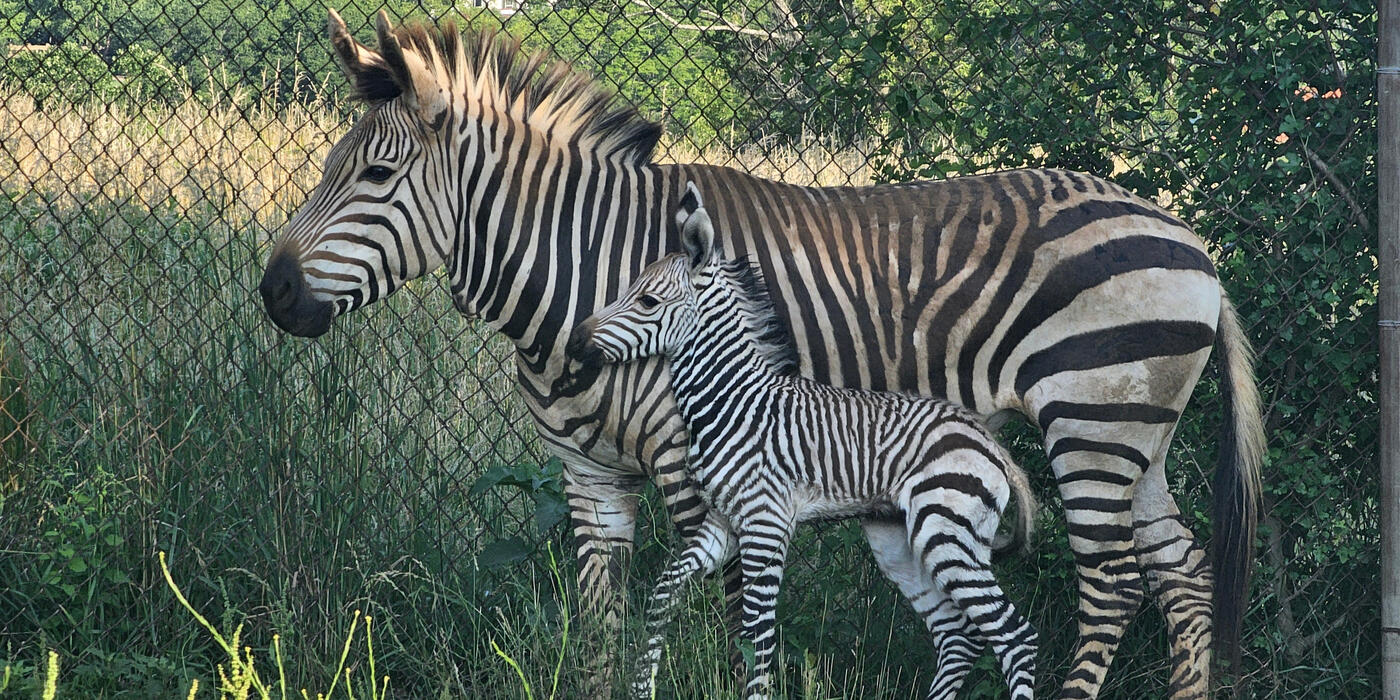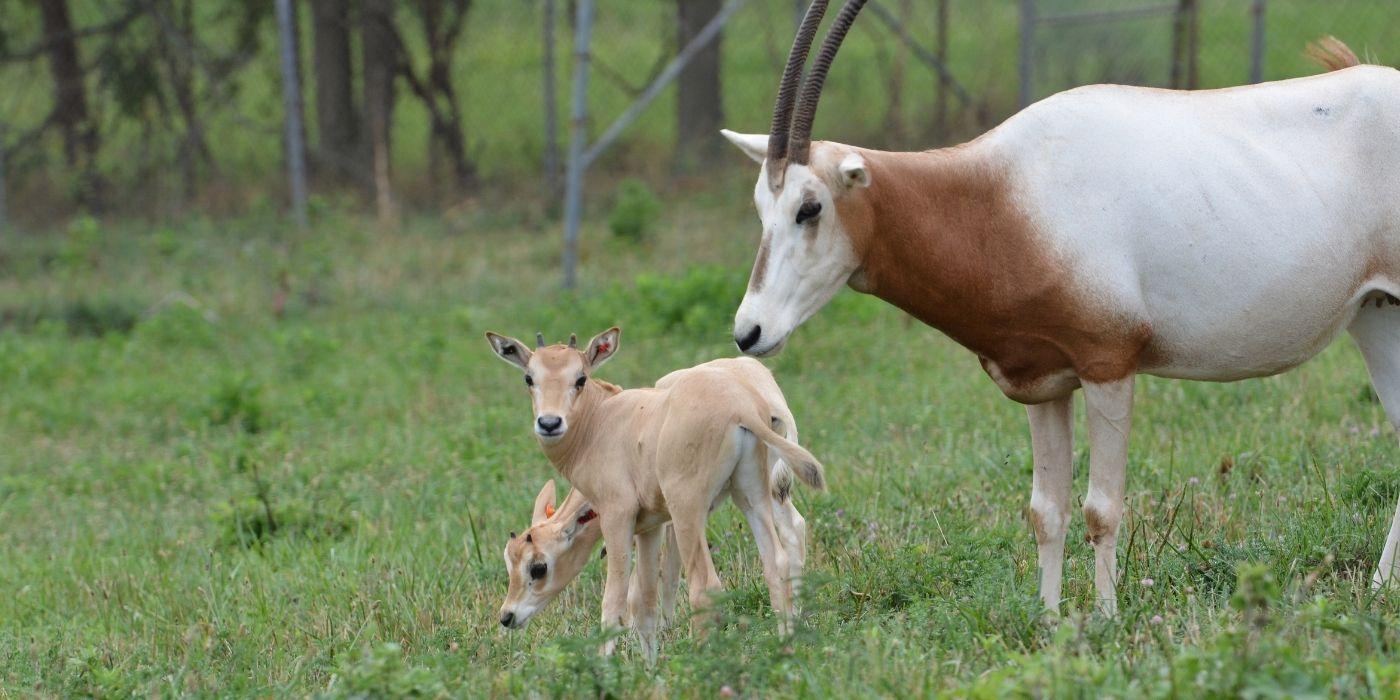Goings on With the Onagers
Persian onagers are an amazing species! And even though they are not one of the iconic species that you may know, as someone who gets to care for them and spend time with them every day, let me tell you just how amazing they are. If you want to understand why onagers are so cool, you have to understand where they come from—which is unforgivingly hot. One of their most incredible adaptations is their ability to withstand extreme temperatures. Persian onagers are native to the semi-desert region of Iran, where it can get up to 120 degrees Fahrenheit during the day. As an animal keeper who also works outside in extreme temperatures and all weather, I wish I had their resilience.
Another amazing thing about onagers is how scrappy they are! Since rain is hard to come by in the desert of central Asia, leaves and grasses provide onagers with most of the water they need to survive, which distinguishes them from other equine species. A Przewalski’s (sha-VAL-ski) horse may drink up to 12 gallons of water a day, Persian onagers might only drink 1.5 gallons. Onagers have evolved to handle anything the desert can throw at them with few resources.
If you want to understand onager behaviors and personalities, their evolutionary family tree provides some great insight. They are the largest subspecies of Asiatic wild ass. Their closest relative, the African wild ass, is the ancestor of domestic donkeys. This makes them a very interesting species to work with daily. They are inquisitive, but stubborn enough that everything needs to be their idea. Ancient civilizations attempted to domesticate the onager without success due to their unruly nature.
Why do we have such an obscure and occasionally stubborn species here at SCBI, you might wonder? Well, we have the space and expertise to care for and study Persian onagers. About 1,000 of our 3,200 acres are dedicated to a variety of endangered and threatened species. We are one of only three Association and Zoos and Aquariums-accredited facilities in the United States that is home to Persian onagers. And stubborn as they might be sometimes, onagers need all the help they can get. They are listed as endangered on the International Union for Conservation of Nature’s Red List. There are less than 400 adults in the wild. The main threats to them are the conversion of their habitat to farm land, hunting, trapping, climate change, and droughts. Being in an already arid area, an extended drought can and has been detrimental to their numbers.
Here at SCBI, we currently have nine Persian onagers. We can rotate pastures for the animals and simulate their natural habitat as much as possible. Although the foothills of the Shenandoah Mountains in Virginia is not an arid environment, they seem to have adapted happily to our hilly pastures. Three of our five females are pregnant and can foal (or give birth) anytime from now through the end of September.
Our five females housed together are known as a “herd”. They all have individual markers, and all have names that we use to call and identify them. Their names are Farah, Dorrie, Zaria, Yasmin, and Sayeh.
The herd shifts from pasture to pasture easily, which for a keeper makes working with them extremely enjoyable. It makes your day much easier when your animals go where you ask them to so you can see them up close and work in different areas without disturbing them. Besides roaming their large pastures, they enjoy enrichment, which can be anything from investigating a new smell, tasting new foods, or playing with a water sprayer or jolly balls. Their favorite treats are apple biscuits, and there is little our mares will not do in exchange for tasty apple biscuits.
Related Species:



